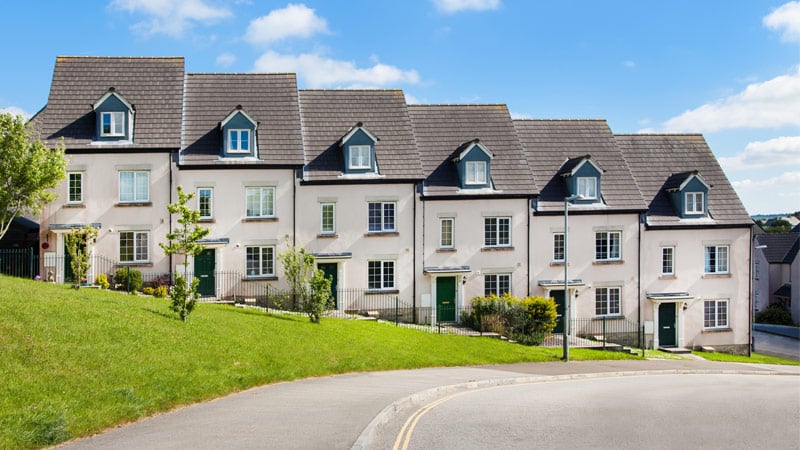UK house prices increased by 2.7% in the year to October, down from 3% in September, The ONS UK House Price Index has found.

UK house prices increased by 2.7% in the year to October, down from 3% in September, The ONS UK House Price Index has found.
This is the lowest annual rate of growth since July 2013, when it was 2.3%.
The region with the lowest annual growth was in London, where prices fell by 1.7% over the year to October, up from a fall of 1.8% in the year to September. The average house price was £231,000 in October 2018, £6,000 higher year-on-year.
John Goodall, chief executive and co-founder of buy-to-let specialist Landbay, said:“Amidst a volatile political and economic landscape, the hesitance of buyers and sellers to act is completely understandable.
“Combine this with the traditional seasonal slowdown, alongside historically low levels of transactions, and stagnant house price growth really is no surprise.
“As we wait to see how Brexit uncertainty unravels, the private rental sector will play a more important economic role than ever as it provides flexibility and value to renters and landlords alike.”
House prices in England grew slower than other countries of the UK, increasing by 2.4% in the year to October, down slightly from 2.6% in the year to September, with the average price in England now standing at £248,000.
House prices in Wales increased by 3.8% over the last 12 months to reach £161,000. In Scotland, the average price increased by 4.4% over the year to stand at £152,000.
The average house price in Northern Ireland currently stands at £135,000, an increase of 4.8% over the year to Q3.
At an English regional level, the North West showed the highest annual growth, with prices increasing by 4.9% in the year to October 2018. This was followed by Yorkshire and The Humber (4.4%).
The English region with the slowest annual growth was in London, where prices fell by 1.7% over the year. London house prices have fallen over the year each month since July 2018.
While annual house price growth in London is slowing, it still remains the most expensive place to buy a house at an average of £474,000, followed by the South East and the East of England, at £327,000 and £295,000 respectively.
The North East continues to have the lowest average price at £128,000 and is the only English region yet to surpass its pre-economic downturn peak.
Falling house prices in London are driven primarily by inner London, for which annual house price growth has been consistently negative since January 2018.
In the year to October house prices in outer London fell by 0.2%, its first annual fall since September 2011.
Both inner and outer London seem to follow similar trends in house price growth, with changes in outer London tending to appear slightly after those in inner London.
Kevin Roberts, director, Legal & General Mortgage Club, added: “Although uncertainty remains, the housing market is diverse and resilient.
“Property prices continue to rise, and at levels that are much more manageable for those looking to step onto the ladder. Increased competition in the mortgage market is also aiding borrowers, offering more products for both young and old.
“The choice on offer from lenders is to be welcomed, but it can also be a little daunting for those looking to step onto, up or even down the property ladder. This is when speaking to an independent mortgage adviser can make all the difference.
“Not only do these individuals have extensive knowledge of the range of products available within the market, but they are also able to really understand the circumstances of borrowers, helping borrowers every step of the way to find a mortgage that fits their needs.”



